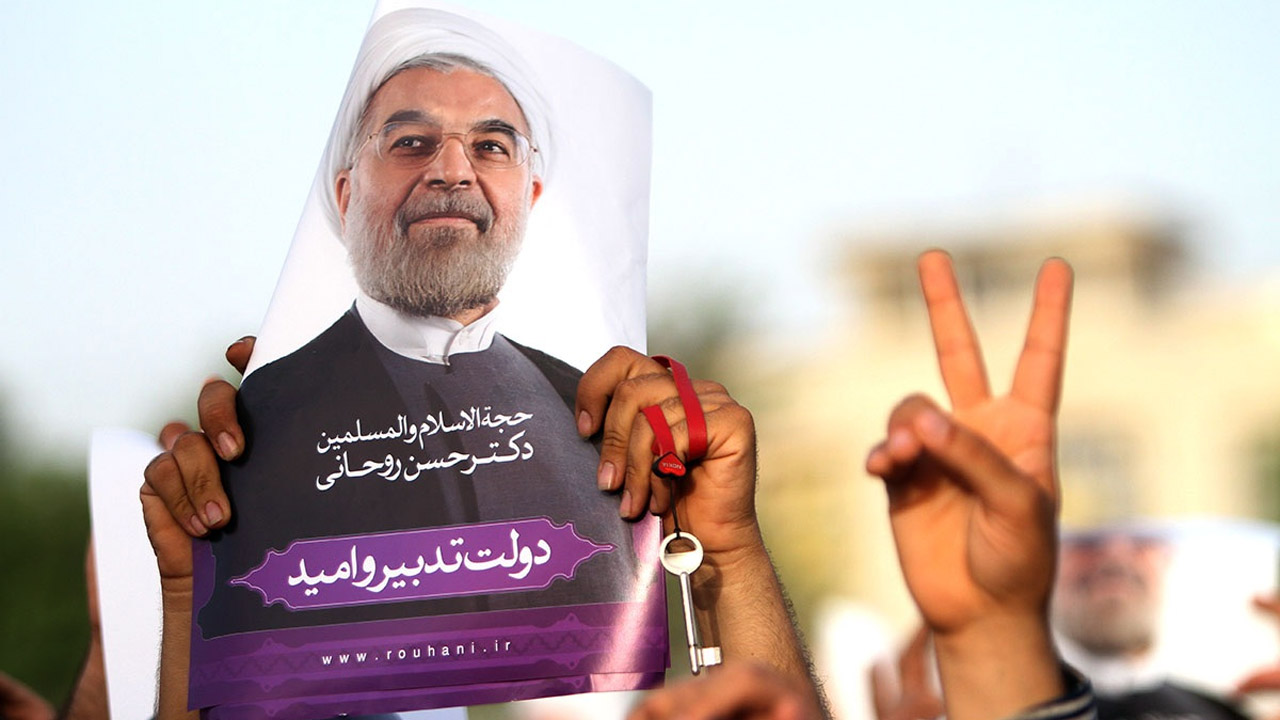The landslide reelection of Iran’s president, Hassan Rouhani, reflects the by now familiar pattern of continuity and change that has characterized Iran’s major elections over the last two decades, reads an article penned by director of London Middle East Institute, Hassan Hakimian, and published by international media organization Project Syndicate. Excerpts of the article follow:
The second familiar feature of the latest election was high voter turnout–about 73%–which has been a hallmark of elections involving popular reform-minded candidates.
Such a surge in Iran is usually driven by the passion of women and young people who hope to benefit from the changes promised by pro-reform candidates.
Rouhani, who also benefited from high turnout when he was first elected in 2013, has the added distinction of avoiding the decline in voter-participation rates that is common for incumbents.
The third–and perhaps most significant–familiar element of the latest election is the backdrop against which it took place. When Iran is at a crossroads, a popular reformist candidate emerges, promising to end Iran’s international isolation, and his conservative rival promotes self-reliance and pledges handouts to the people.
Yet there is one important area in which the latest election stands out: the economy. Rouhani inherited an economy beset by stagflation. Despite record oil revenues, GDP contracted by nearly 7% in 2012 and annual inflation rose above 40%, after the near-collapse of the Iranian currency (the rial). When oil prices crashed–by some 70% since mid-2014–the situation looked even bleaker.
But Rouhani worked hard to free Iran’s economy from the shackles of international sanctions. And, in 2015, he secured a deal with six countries–China, France, Germany, Russia, the United Kingdom and the United States–along with the European Union to halt Iran’s nuclear program in exchange for economic relief.
However, even as sanctions have been eased, Iran’s economy has continued to struggle. Despite some progress since the deal came into effect in 2016, foreign investors have remained cautious, owing to lingering US non-nuclear sanctions and banking restrictions. No one wants to fall afoul of the US Treasury.
It is not easy to pursue macroeconomic stabilization and economic growth simultaneously. The problem is accentuated when stabilization is given priority, owing to the economic pain and social backlash that can result.
The Rouhani government’s continued popular support may seem surprising, given that it has pursued macroeconomic stability over growth. This is partly a reaction to the excesses of statism under Rouhani’s populist predecessor, Mahmoud Ahmadinejad. It also partly reflects the neoliberal credentials of his economic team.
Perhaps most importantly, it underscores Rouhani’s hope that the “peace dividend” from the nuclear agreement would be enough to boost lagging domestic demand and offset the impact of fiscal tightening.
Though progress has been slow, Rouhani’s achievements are significant. Inflation in Iran has been reduced to single digits (around 9% per year) and growth has reached 5-6%.
To be sure, growth remains uneven and shaky, and mostly reflects the growth of oil output, which has attained its pre-sanctions level of nearly 4 million barrels a day.
Iran’s lopsided GDP growth enabled Rouhani’s conservative rivals to turn the election into something of a referendum on his economic record. But the scale of Rouhani’s victory suggests that the public, though very concerned about the state of the economy, has some hope for his approach.
If Rouhani is to continue to make progress, however, he will need to look beyond current conditions to address entrenched structural challenges facing the Iranian economy, as well as the limitations of the Islamic Republic’s institutional, judicial and legal frameworks.
The first structural challenge lies in Iran’s excessive dependence on the oil sector. Despite recent reductions in oil income, the sector still accounts for over 70% of total exports. If the country is to achieve sustainable, broad-based, and inclusive economic growth, diversification is critical.
The second structural challenge is demographic. Iran’s large youth population can be a powerful driver of growth. But, to tap that potential, there is an urgent need to create jobs, thereby reducing youth unemployment, which stood at 29.4% in 2014 (when total unemployment was 12.8%).
Judging by Rouhani’s resounding electoral victory, it seems that Iranians are willing to give him the chance to attempt to finish what he started.


